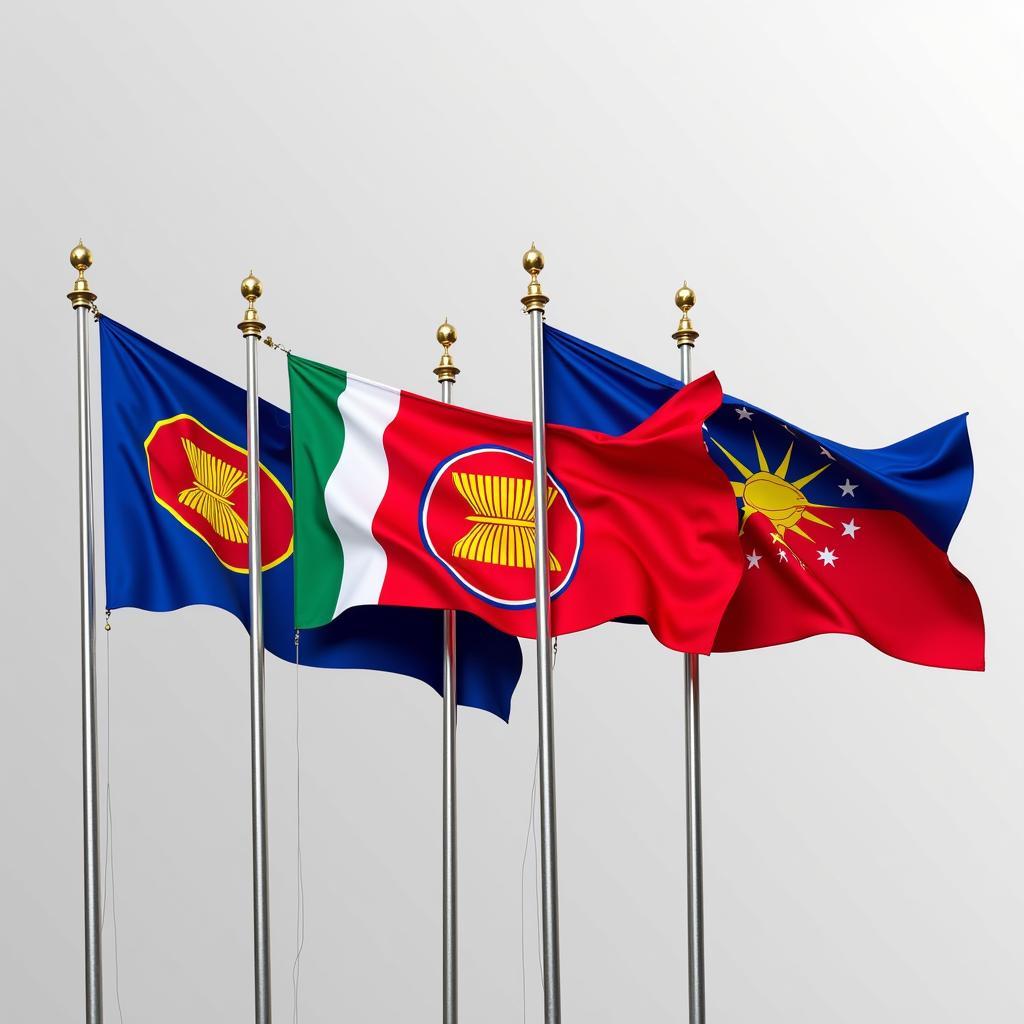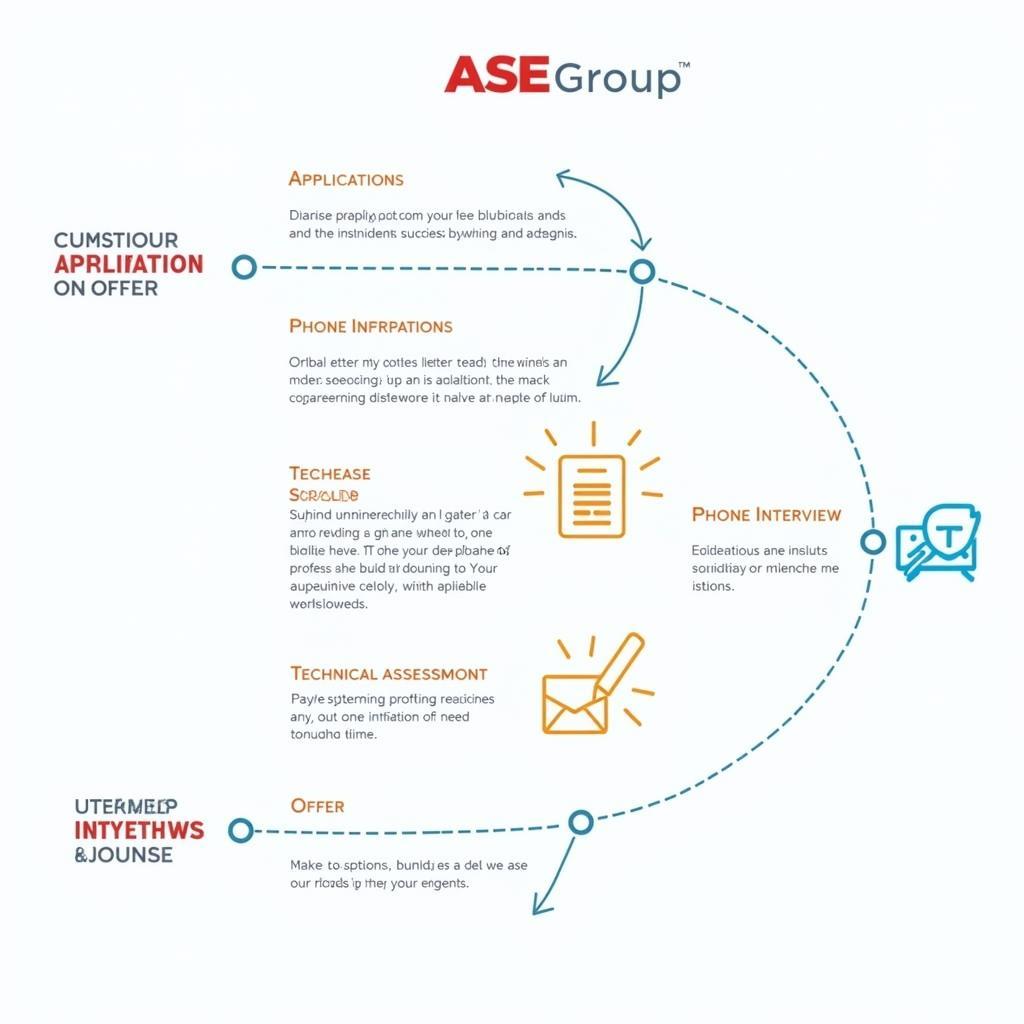The term “Asean Meaning” encompasses far more than just its literal definition. Within these three words lies a story of collaboration, economic growth, cultural exchange, and a shared vision for a peaceful and prosperous Southeast Asia. This article delves into the multifaceted aspects of ASEAN, exploring its historical context, core principles, and its significance in the global landscape.
Deconstructing “ASEAN Meaning”: More Than Just an Acronym
ASEAN, the Association of Southeast Asian Nations, represents a dynamic and diverse region with a rich tapestry of cultures, languages, and histories. Understanding “ASEAN meaning” requires examining the organization’s foundation, its evolution, and its ongoing efforts towards regional integration. From its inception in 1967, ASEAN has aimed to foster peace, stability, and cooperation among its member states.  ASEAN Flags Symbolize Unity
ASEAN Flags Symbolize Unity
The five founding members – Indonesia, Malaysia, the Philippines, Singapore, and Thailand – sought to create a platform for dialogue and collaboration, initially focusing on political and security concerns. Over the decades, ASEAN’s mandate has expanded to encompass economic, social, and cultural spheres, reflecting the evolving needs and aspirations of its member states.
The Core Principles Behind “ASEAN Meaning”
At the heart of “ASEAN meaning” are the core principles that guide the organization’s actions and decisions. These principles, enshrined in the ASEAN Charter, provide a framework for peaceful conflict resolution, mutual respect, and non-interference in internal affairs. They also emphasize the importance of consensus-based decision-making and the promotion of regional identity.
- Mutual respect for the independence, sovereignty, equality, territorial integrity, and national identity of all nations.
- The right of every State to lead its national existence free from external interference, subversion or coercion.
- Non-interference in the internal affairs of one another.
- Settlement of differences or disputes by peaceful means.
- Renunciation of the threat or use of force.
- Effective cooperation among themselves.
These principles underscore ASEAN’s commitment to maintaining peace and stability in the region. They also provide a foundation for building trust and fostering cooperation among member states.
“ASEAN Meaning” in the 21st Century: Navigating a Complex World
Today, “ASEAN meaning” continues to evolve in response to global challenges and opportunities. The organization plays a crucial role in promoting economic integration through initiatives like the ASEAN Economic Community (AEC). The AEC aims to create a single market and production base, facilitating the free flow of goods, services, investment, and skilled labor. ase meaninf
What Does ASEAN Mean for the Average Citizen?
For the average citizen, “ASEAN meaning” translates to tangible benefits such as increased trade opportunities, greater mobility within the region, and enhanced cultural exchange. It also signifies a shared commitment to addressing common challenges like climate change, disaster management, and transnational crime.
“ASEAN’s strength lies in its diversity,” says Dr. Amelia Tan, a prominent Southeast Asian economist. “By embracing their differences, member states can leverage their unique strengths to achieve collective prosperity.”
Conclusion: The Enduring Significance of “ASEAN Meaning”
“ASEAN meaning” represents a shared journey towards a more integrated, prosperous, and peaceful Southeast Asia. ase meaning pilot The organization’s commitment to dialogue, cooperation, and mutual respect provides a beacon of hope for the region and serves as a model for regional cooperation worldwide. Understanding “ASEAN meaning” is essential for anyone seeking to engage with this dynamic and increasingly important part of the world. ase meanig
FAQ
- What does ASEAN stand for? (ASEAN stands for the Association of Southeast Asian Nations.)
- How many countries are in ASEAN? (There are currently 10 member states in ASEAN.)
- When was ASEAN established? (ASEAN was established on August 8, 1967.)
- What is the purpose of ASEAN? (The main purpose of ASEAN is to promote regional cooperation and integration in Southeast Asia.)
- What are the key principles of ASEAN? (Key principles include mutual respect, non-interference, and peaceful settlement of disputes.)
- What is the ASEAN Economic Community? (The AEC aims to create a single market and production base in Southeast Asia.)
- How does ASEAN benefit its member states? (ASEAN benefits its members through increased trade, greater mobility, and enhanced cultural exchange.)
Need support? Contact us 24/7: Phone: 0369020373, Email: aseanmediadirectory@gmail.com, or visit us at: Thôn Ngọc Liễn, Hiệp Hòa, Bắc Giang, Việt Nam.

